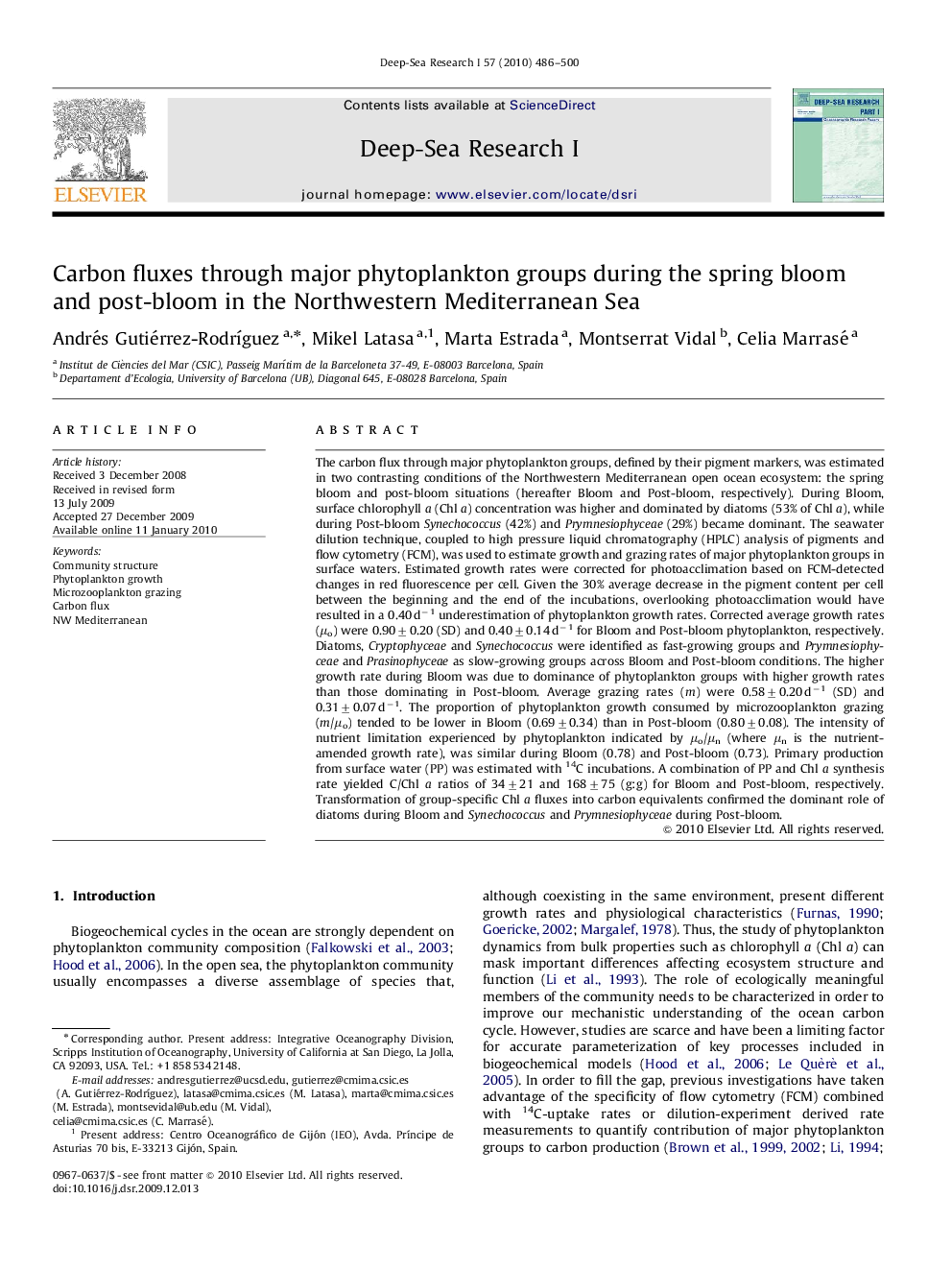| Article ID | Journal | Published Year | Pages | File Type |
|---|---|---|---|---|
| 4535116 | Deep Sea Research Part I: Oceanographic Research Papers | 2010 | 15 Pages |
The carbon flux through major phytoplankton groups, defined by their pigment markers, was estimated in two contrasting conditions of the Northwestern Mediterranean open ocean ecosystem: the spring bloom and post-bloom situations (hereafter Bloom and Post-bloom, respectively). During Bloom, surface chlorophyll a (Chl a) concentration was higher and dominated by diatoms (53% of Chl a), while during Post-bloom Synechococcus (42%) and Prymnesiophyceae (29%) became dominant. The seawater dilution technique, coupled to high pressure liquid chromatography (HPLC) analysis of pigments and flow cytometry (FCM), was used to estimate growth and grazing rates of major phytoplankton groups in surface waters. Estimated growth rates were corrected for photoacclimation based on FCM-detected changes in red fluorescence per cell. Given the 30% average decrease in the pigment content per cell between the beginning and the end of the incubations, overlooking photoacclimation would have resulted in a 0.40 d−1 underestimation of phytoplankton growth rates. Corrected average growth rates (μo) were 0.90±0.20 (SD) and 0.40±0.14 d−1 for Bloom and Post-bloom phytoplankton, respectively. Diatoms, Cryptophyceae and Synechococcus were identified as fast-growing groups and Prymnesiophyceae and Prasinophyceae as slow-growing groups across Bloom and Post-bloom conditions. The higher growth rate during Bloom was due to dominance of phytoplankton groups with higher growth rates than those dominating in Post-bloom. Average grazing rates (m) were 0.58±0.20 d−1 (SD) and 0.31±0.07 d−1. The proportion of phytoplankton growth consumed by microzooplankton grazing (m/μo) tended to be lower in Bloom (0.69±0.34) than in Post-bloom (0.80±0.08). The intensity of nutrient limitation experienced by phytoplankton indicated by μo/μn (where μn is the nutrient-amended growth rate), was similar during Bloom (0.78) and Post-bloom (0.73). Primary production from surface water (PP) was estimated with 14C incubations. A combination of PP and Chl a synthesis rate yielded C/Chl a ratios of 34±21 and 168±75 (g:g) for Bloom and Post-bloom, respectively. Transformation of group-specific Chl a fluxes into carbon equivalents confirmed the dominant role of diatoms during Bloom and Synechococcus and Prymnesiophyceae during Post-bloom.
